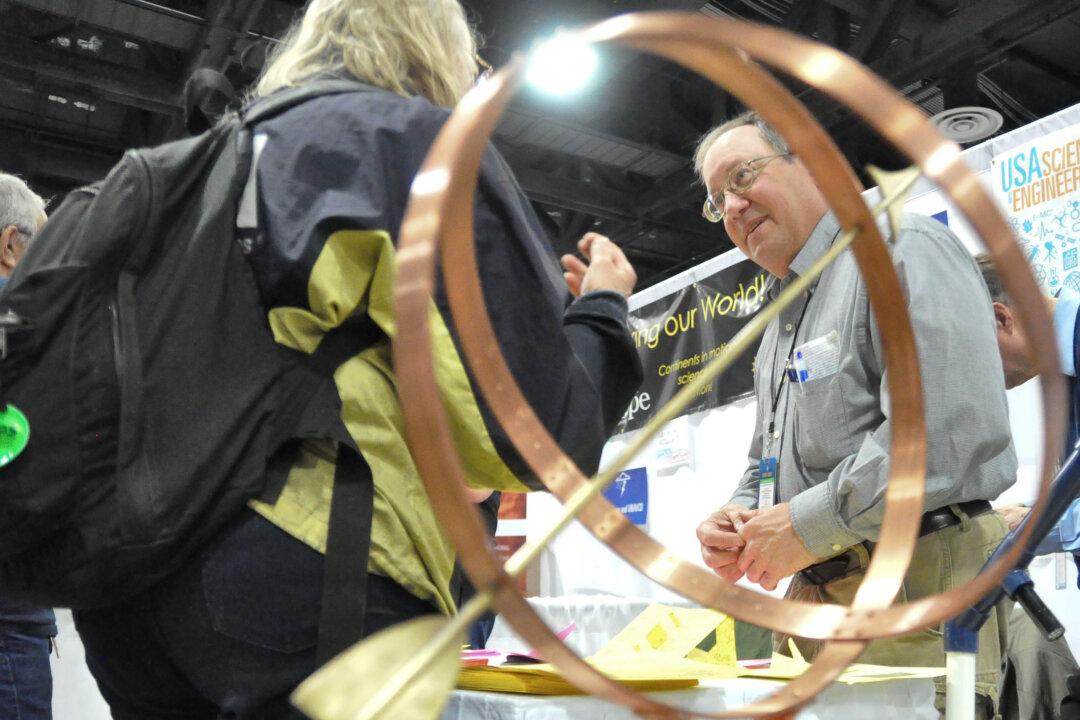WASHINGTON—“Digital sundial” is not an oxymoron. Bill Kellogg of the North American Sundial Society patented a digital sundial, the workings of which he explained at the USA Science & Engineering Festival in Washington, D.C., on Sunday.
Basically, light from the sun radiates through sets of slit in the contraption, and based on the position of the sun, the light will filter through in such a way that it projects out the other side of the device in the form of numbers that correspond to the time.
At half past noon, the light will filter through the slits and come out the other side as “12:30.”
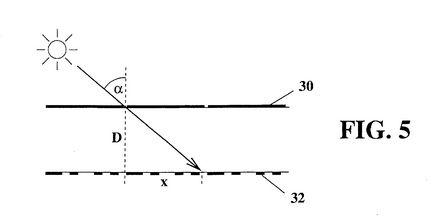
A patent diagram showing sun beams entering a digital sundial. This design by Hans and Dan Scharstein is similar to Bob Kellogg’s.
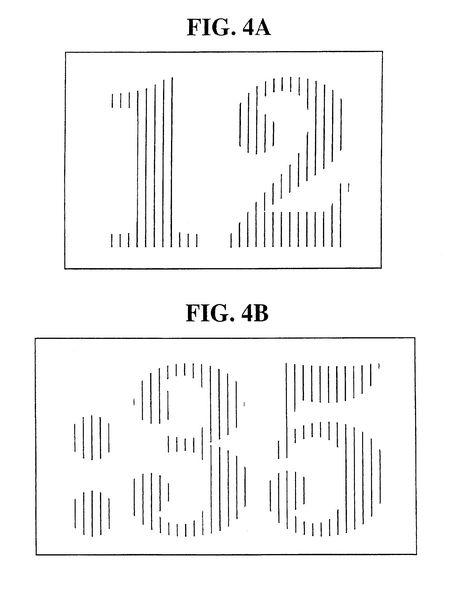
A patent diagram showing sun beams as they would exit the digital sundial at 12:35.
This makes reading a sundial as easy as reading the time on a wristwatch or smartphone—or smart watch or whatever contraption people start using to tell the time. Canadian artist Daniel Voshart’s Sun Cube works on a similar principle and has gotten some media attention in the past year.
Kellogg’s interest in celestial mechanics brought him to the North American Sundial Society and it also caused him to delight in early mornings at boot camp in his youth. “Everybody’s so dismal and I’m just having a field day because I’m getting to see the stars,” he recalled.
From ancient Egypt to ancient Ireland, the ancestors of humankind have long told time with sundials, and there’s reason yet to keep them around.
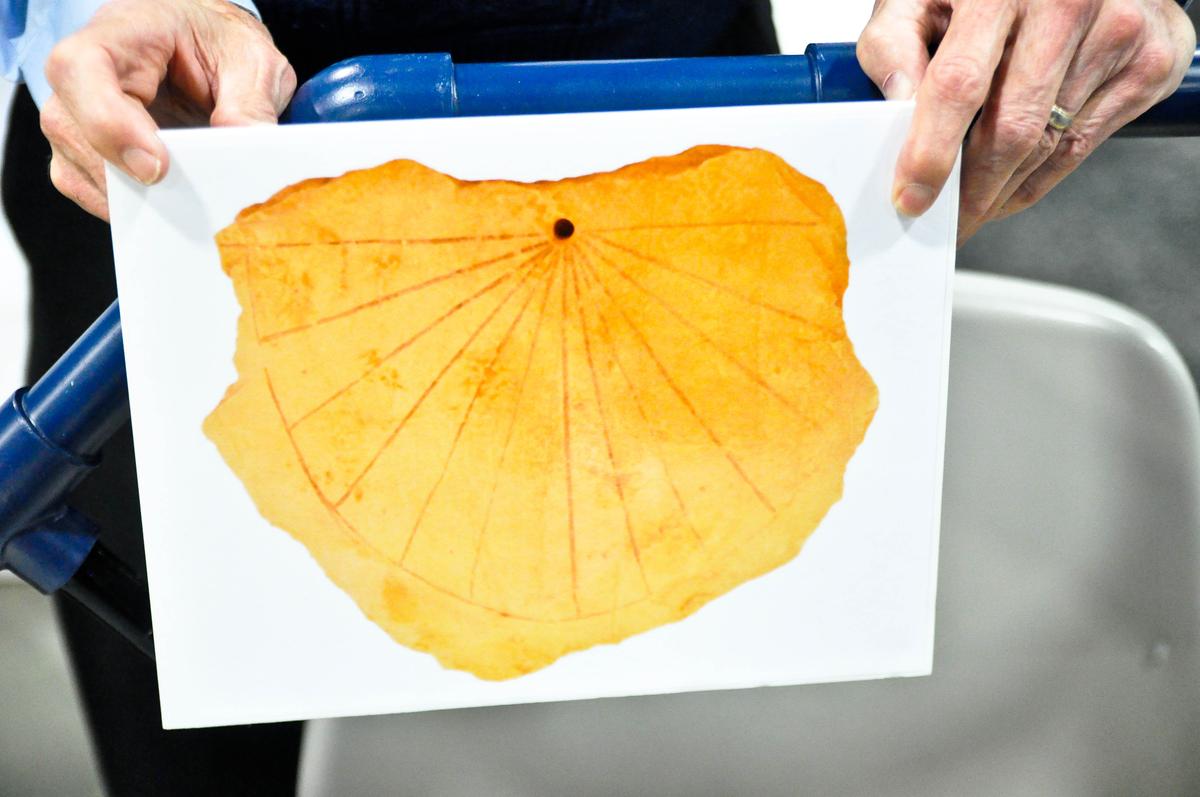
Bob Kellogg holds a photo of an ancient sundial used in Egypt, at the USA Science & Engineering Festival in Washington, D.C., on April 27, 2014. (Tara MacIsaac/Epoch Times)
Today, sundials are mostly built as artwork. But Kellogg encourages people to use them too. He has worked with schools to bring sundials to the playground—the pieces of art are useful and educational, he said. He’s particularly excited about sundials that use the human body as the gnomon (the part of the sundial that casts a shadow). “You create your own time,” Kellogg said with a smile.
In some ways, sundials could be more accurate. Our time zones put chunks of the world between latitudinal lines in a uniform time. With a sundial, it may be 12:05 here, but 12:15 a little further away.
Sundials are also used on Mars.
Bill Nye, the famed television “Science Guy,” gets excited about sundials, and particularly sundials on Mars.

Bill Nye at the USA Science & Engineering Festival in Washington, D.C., April 27, 2014. (Tara MacIsaac/Epoch Times)
He was also at the USA Science & Engineering Festival. He explained in a presentation to a massive crowd that amassed around the Einstein stage set up in the Walter E. Washington Convention Center that sundials help scientists observe Mars.
On Earth, the shadow cast on a white surface outdoors is slightly blue. The color comes from the sky. On Mars, the orange sky is similarly reflected. Photos taken by rovers on Mars come out tinted. By looking at the shadow on the sundial attached to the rover, scientists can figure out how much of the color they observe on the rock is brought into the picture from the color of the sky.
Nye’s father was a soldier and brought Nye up with an appreciation of sundials. Nye recalled being at a meeting in which space program scientists were discussing Mars observation. He told the story with all the gusto and the mix of slang and science jargon that has made him a truly popular scientist.
“I just started jumping out of my chair—’You guys we’ve got to make the photometric calibration target, the test pattern for the camera, we’ve got to make that into a sundial!’”
“And they’re all looking at me like, ‘Dude, really, you know it’s the space program. … Bill, I see you’re wearing a watch. You know we have clocks now.’”
Nye said: “No, it’ll be cool. Come on, we can reckon time on another world! It’ll be like those guys who speak Klingon, except it’ll be real.”
The dials on the Spirit and Opportunity rovers have an inscription on them: “Two Worlds One Sun.” The Curiosity’s sundial has an inscription that reads, “To Mars to Explore.”
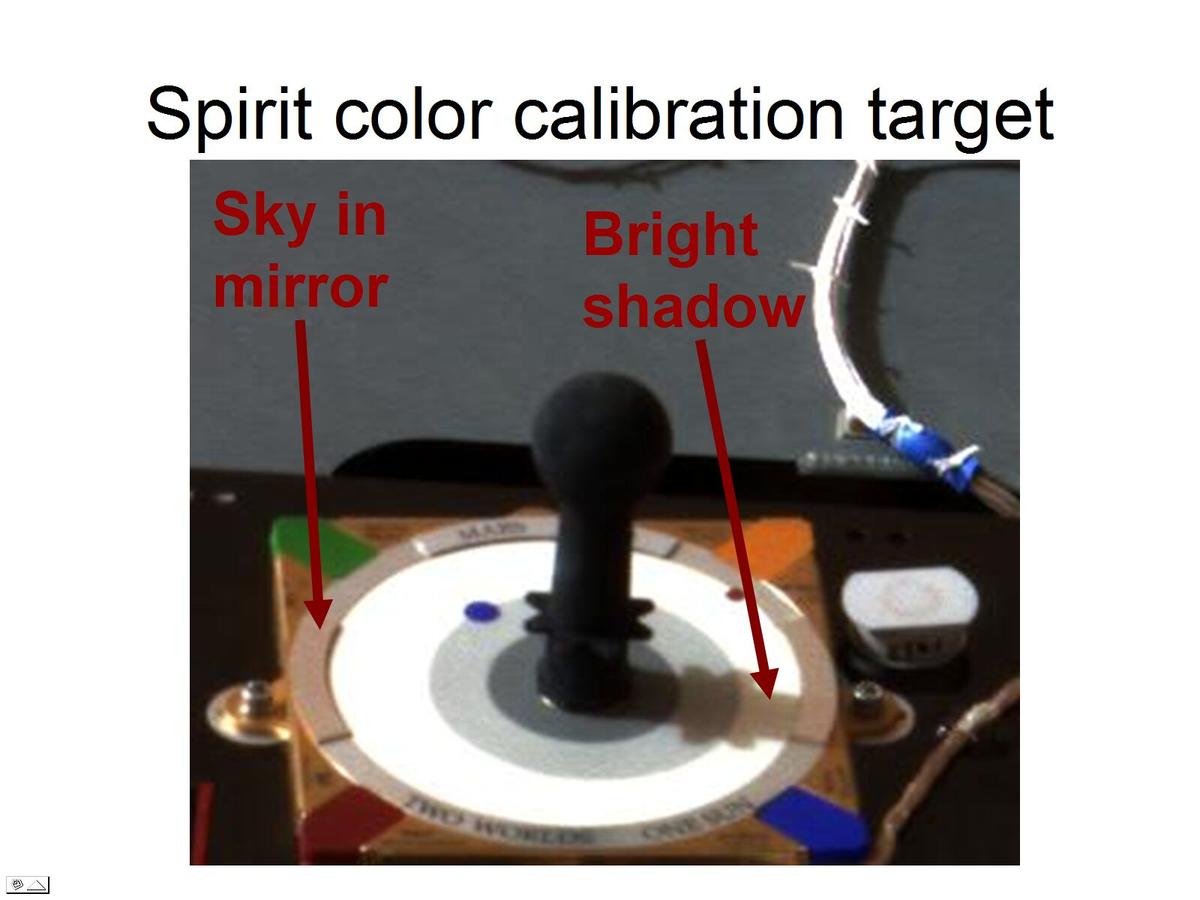
This image taken on Mars by the panoramic camera on the Mars Exploration Rover Spirit shows the rover’s color calibration target, also known as the MarsDial. The target’s mirror and the shadows cast on it by the Sun help scientists determine the degree to which dusty martian skies alter the panoramic camera’s perception of color. By adjusting for this effect, Mars can be seen in all its true colors. (NASA/JPL/Cornell University)
Epoch Times was a media sponsor of the 2014 USA Science & Engineering Festival in Washington, D.C., April 26–27. The USA Science & Engineering Festival is a national grassroots effort to advance STEM education and inspire the next generation of scientists and engineers. See more articles on the USA Science & Engineering Festival.
